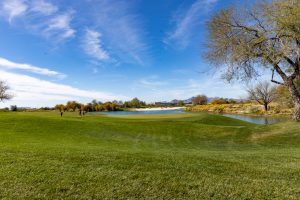- Slug: Sports-Golf Popularity Boom, about 2,000 words.
- 4 photos available
By Brandon Bonaparte
Cronkite News
MESA – After a boom in golf’s popularity that followed the emergence of Tiger Woods as a sports superstar, the game slipped into a post-Tiger effect downtrend. Over a 15-year period from 2003 to 2018, the number of golfers declined in the United States by 6.8 million.
More than 1,200 courses closed across the country over that same span, golf manufacturers saw sales sink and considerable hand-wringing followed over what could be done to bring golfers back and also attract a new generation to the game.
Former golf great and course designer Jack Nicklaus even suggested, among other things, enlarging the hole to speed up play or dividing 18-hole courses into three six-hole courses instead of two nine-hole ones to allow players to play 12 holes, thus spending less time at the club.
Then along came a global pandemic.
At first, people were confined to the indoors when COVID-19 struck. Eventually, social distancing and small gatherings were encouraged. Outdoor activities were deemed more safe, which aligned perfectly with golf.
In 2020, especially over the second half of the year, numbers for golf suddenly improved. And they’ve continued to skyrocket.
A pandemic and the sport’s commitment to modernization have lured many back to the fairways.
“The golf course was considered a place for people to escape the pandemic,” Longbow Golf Club general manager Bob McNichols said. “You don’t play golf indoors where you’re restricted in the air you breathe and the access you have to the environment. So, golf became a popular activity for people who were no longer doing things the same way they always did and looking for not only activities, but a way to get better at the game.”
According to the National Golf Foundation, 2020 saw an increase of golfers by 500,000, a 2% uptick from 2019. An estimated 502 million rounds of golf were played in 2020, compared to 441 million played in 2019.
The popularity increase has helped golf course businesses boom.
“We got to the point now where we don’t really have enough tee times,” said Andrew Frazier, vice president of Paradigm Golf Group and director of sales and services at Dobson Ranch Golf Course, a municipal 18-hole course in Mesa. “There’s only so much sunlight.”
Golf courses aren’t the only aspect of golf with increasing business. PGA Tour Superstore saw a 70 percent increase in business during 2020 and 2021, according to the National Golf Federation.
Golf balls, apparel, clubs and other gear all witnessed growth after the pandemic began. From 2020-2021, for Callaway Golf Company, golf club sales increased by over $207 million, apparel sales increased by $141 million, golf ball sales increased by $39 million and gear/accessory sales increased by $68 million, according to statista.com.
At the beginning of the pandemic, golf seemed to be still on a downward spiral. In April 2020, 42.2 percent less rounds were played compared to April 2019. However, by November 2020, golf was well on its way, with a 56.5 percent increase in rounds played compared to November 2019.
In recent years, it’s apparent that more people are going out to the course and buying gear. While the COVID-19 pandemic is a big factor in the sport’s growth, golf courses and other sports entertainment companies are taking a more modern approach to their facilities and brands.
“Golf has been around for a really long time,” Frazier said. “It’s a sport of tradition and everything like that. We don’t think golf is the most forward thinking sport.”
Golf courses such as Dobson Ranch bump music throughout their course, on the driving range and even on golf carts.
“We’ve had the speakers for two, almost three full years now on the carts,” Frazier said. “The music around the properties is another thing we do at all of our properties. Again, just to kind of keep the energy up and keep things more of a fun and kind of friendly environment.”
The atmosphere at Dobson Ranch Golf Course is modern and represents the changing culture of the sport. Cheyanne Stewart, the lead junior instructor at Dobson Ranch, said golf is adjusting to make everybody feel welcome and comfortable.
“This golf course is really inclusive,” Stewart said. “It really adopted the trends that the community, even the world, has loved: wearing the hats, not having to wear your shirts tucked-in all the time. You don’t have to wear the golf shoes, and all that stuff. It doesn’t matter what you look like or what you wear. We’re just happy that you’re here.”
Stewart, 23, has witnessed a shift in the clientele toward a younger crowd.
“When I started playing, it was the 50-plus (age) and older always here every day of the week,” Stewart said.
Now, Stewart said, senior citizens are far from the only age group present at the course. College students play. Working middle-aged moms and dads come out to the fairways. So do families.
Golf’s appeal appears to be changing, but one may think courses are now faced with an identity crisis. The old-timers of the game want to play a full 18 in collared shirts and slacks, while the next generation of golfers prefer to wear shorts, compete to see who can hit the ball the farthest and play a quick nine instead of 18.
Still, the fusion between traditionalists and the modern, younger generation has gone smoothly.
Frazier said that, less than seeing golf get younger, he just senses an air of enjoyment from all ages around the facility.
Frazier implemented the same changes at a course in South Florida amid a retirement community. The participants enjoyed the change of environment, he said.
“It’s almost like a fountain of youth,” Frazier said. “You put on the music, you start doing games, you do contests. I mean, we’ve got cornhole out here. It’s just kind of bringing a breath of fresh air to (the older participants).
“The coolest thing to see is everybody went from being kind of somber and focused to now exciting, having fun, meeting each other. It’s really gotten a sense of a community started.”
At all ages, golf is now more associated with fun. While the buttoned-down, traditional approach still remains for some, the sport can take on other forms.
The basic premise around any sport is competition. Athletes like to compete, fans like to watch competition and bloggers like to write about competition.
The competition in golf revolves around shooting the lowest score over 18 holes. Taking the least amount of strokes per hole will earn you first place, and that is how the sport determines the winner of the tournament at the high school, college and professional level.
However, a round of golf can take more than four hours to play, and tournament golf often takes even longer to determine a winner.
Today’s golfers, many of them of a younger generation, crave shorter, more frequent competition. Today, golf courses are finding ways to appeal to them. That’s where businesses like Topgolf, which “gamify” golf, have flourished.
A 2018 survey conducted by the National Golf Foundation revealed that 53% of Topgolf guests who identified as non-golfers said, “that playing Topgolf has positively influenced their interest in playing traditional golf.’”
“I think it all goes back to that you have a younger crowd that is super into games and competitions,” Frazier said. “Finding ways to gamify golf for the traditional driving range experience is one thing.”
Further pushing the younger appeal to the sport is the celebrity connection. Professional athletes from other sports pick up the clubs and draw increased attention to the sport. Musical artists, actors and other celebrities do the same.
In ESPN’s “The Last Dance” documentary about the Chicago Bulls, Michael Jordan is constantly seen golfing during his free time. Former Cardinals receiver Larry Fitzgerald, country musician Dierks Bentley, Green Bay Packers quarterback Aaron Rodgers, comedian Bill Murray and Olympic swimmer Michael Phelps are among the celebrities who have played in what is now called the Annexus Pro-Am during the WM Phoenix Open at TPC Scottsdale through the years.
Golden State Warriors star Stephen Curry has even played in a couple of Korn Ferry Tour events, and is executive producer of ABC’s miniature-golf-based game show, “Holey Moley.”
“Now, you can see Steph Curry, Larry Fitzgerald, all sorts of well-known names that you would never have imagined seeing on a golf course,” Frazier said. “Turns out they’re avid golfers, right?”
Despite the recent uptick in popularity, those in the golf industry are still looking for innovative ways to draw newcomers to the sport or make it more enjoyable for those who already play.
At Longbow Golf Club in Mesa, golfers can use GolfBoards to move between shots instead of two-person carts. The single-rider electric boards are reminiscent of electric scooters and are being used at more than 300 courses across the country, according to the company’s website.
“There’s no wasting time driving two people in a car, going over here, and going over there,” said Kristin Heffern, a golfer who used the GolfBoard at Longbow. “They’re fast. They’re exciting. They keep you focused on the game. It’s a bit of an adrenaline rush.”
Both Dobson Ranch and Longbow also utilize Toptracer technology on their driving ranges, giving golfers the kind of feedback on their swings that pros get, while also adding some fun to the experience.
“I guess the best way to explain it is that we have outfitted our range with Toptracer technology, which is a system of cameras and monitors that track your shots and allow patrons to practice with detailed information as well as play games like virtual golf, long drive, and accuracy contests on the monitors as opposed to just hitting range balls out at stationary targets,” Frazier said in an email.
More versions of the sport are popping up, but this isn’t the first time golf has taken other forms. Miniature golf has been around for more than 100 years. There also are alternative sports that are modeled after golf, such as footgolf and disc golf.
“There’s a variety of ways to be introduced or enjoy the game,” said Hugh Smith, director of regional affairs at Youth on Course. “I think (the variety of ways) are all a plus.”
The sudden spike in golf’s popularity isn’t just showing up on golf courses, driving ranges and game centers. It also is reflected in television ratings.
According to golfweek.usatoday.com, the last round of the 2022 Masters attracted more viewers than any other golf telecast on any other network since the fourth round of the 2019 Masters, a tournament in which Tiger Woods emerged as the champion after a long hiatus from winning a major.
Woods again factored into the ratings, returning at the Masters from a one-car crash that left him severely injured and with a reconstructed right leg and ankle.
Woods also has played a part in another potential factor in the increase in golf’s popularity – diversity.
Diversity of race and gender are a recurring issue for golf. Zippia.com reports that 88.7% of professional golfers are male, compared to 8.6% women. Additionally, 67% of pro golfers are white, compared to 14% who identified as Hispanic or Latino and 9.5% identified as Black or African American.
However, Stewart believes diversity in golf is improving.
“A personal friend of mine, Christyn Carr… Grant Thornton, it’s an insurance company. They got in touch with her,” Stewart said. “She’s a college student right now and goes to an HBCU (North Carolina A&T). They reached out to Mariah Stackhouse and two other pros as well to do a commercial. They played a couple holes, and instead of the hole saying it’s a par 5 or a par 4, they called it equality or inclusive.”
Steps like this, as well as continuing to build off of the current momentum, could pave a bright future for the sport of golf.
For more stories from Cronkite News, visit cronkitenews.azpbs.org.



